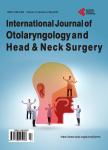The Precautions Efficacy Taken among Health Care Workers While Performing Tracheostomies on COVID-19 Patients: Systematic Review
The Precautions Efficacy Taken among Health Care Workers While Performing Tracheostomies on COVID-19 Patients: Systematic Review作者机构:East Jeddah General Hospital Jeddah Saudi Arabia University of Jeddah Jeddah Saudi Arabia Dr. Soliman Fakeeh Hospital Jeddah Saudi Arabia King Abdulaziz Medical City Jeddah Saudi Arabia International Medical Center Jeddah Saudi Arabia
出 版 物:《International Journal of Otolaryngology and Head & Neck Surgery》 (耳鼻喉(英文))
年 卷 期:2022年第11卷第6期
页 面:283-291页
学科分类:1002[医学-临床医学] 100214[医学-肿瘤学] 10[医学]
主 题:Tracheostomy COVID-19 Health Care Workers
摘 要:Background & objectives: Coronavirus disease 19 (COVID-19) has been declared by World Health Organization as a global pandemic disease in March 2020. Acute respiratory distress syndrome is frequent complication of COVID-19 disease. Tracheostomy is needed in cases of prolonged mechanical ventilation (7 - 10 days) in patients with acute respiratory distress syndrome. Tracheostomies are highly aerosol generating procedures, Otorhinolaryngologists and Health Care Workers (HCWs) are at high risk of virus exposure. The aim of this review is to evaluate the risk of transmission of COVID-19 during tracheostomy procedure, and to review the practical recommendation and scope of the timing to reduce risk of transmission to HCW. Methods: PubMed database was searched between April 2020 to Jan 2021 using the terms “Tracheostomy AND COVID-19 AND Health Care Workers. All the articles that shared the same aim were screened which resulted in 243 references without duplicates. The title and abstract screening excluded further 202 studies. Eventually 9 full-text studies were included. Results: Five hundred and two COVID-19 patients underwent tracheostomies during the study period. Sixty-three percent of the procedure were done through open technique, while 37% of them were done through percutaneous technique. Seventy-eight percent of them used full Personal Protective Equipment (PPE) and 44.4% used Powered Air Purifying Respirator (PAPR). Negative Pressure Rooms (NPR) were used in 67%. Conclusion: The studies showed similar negative results on HCW infection despite much variance in using PPE. However, there should be global unified recommendations and guidelines regarding tracheostomies in COVID-19 patients to prevent future HCW infection.



